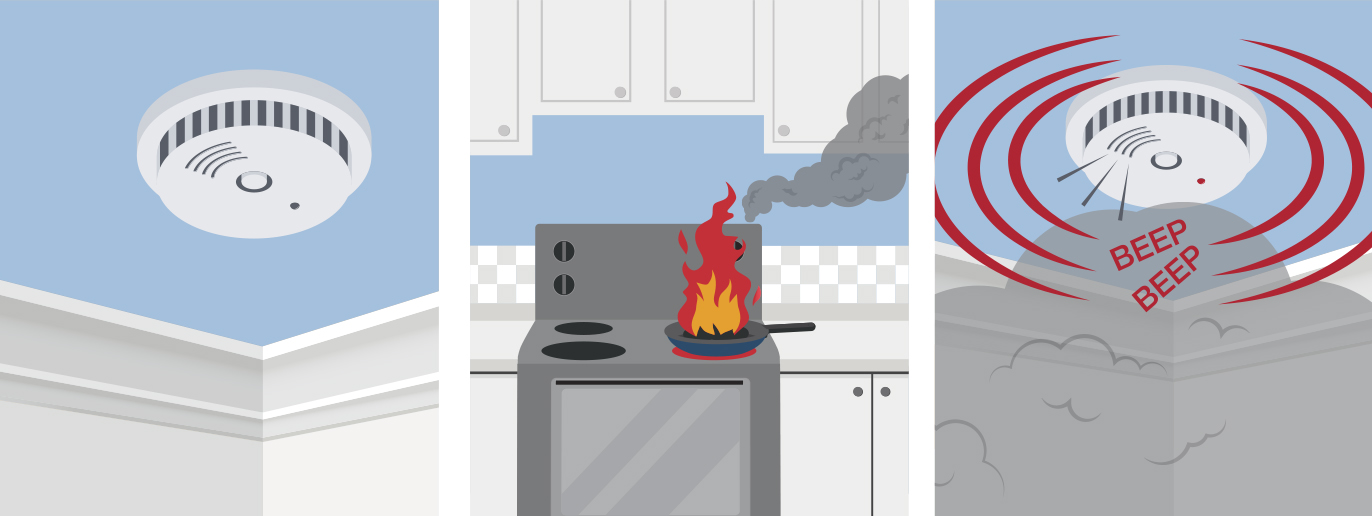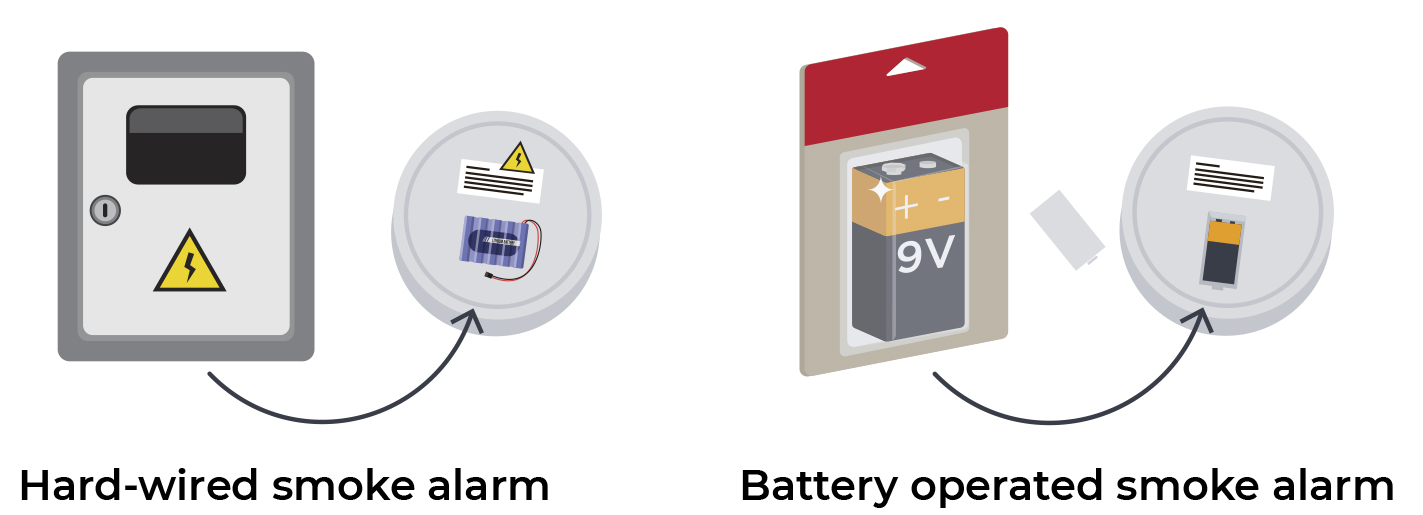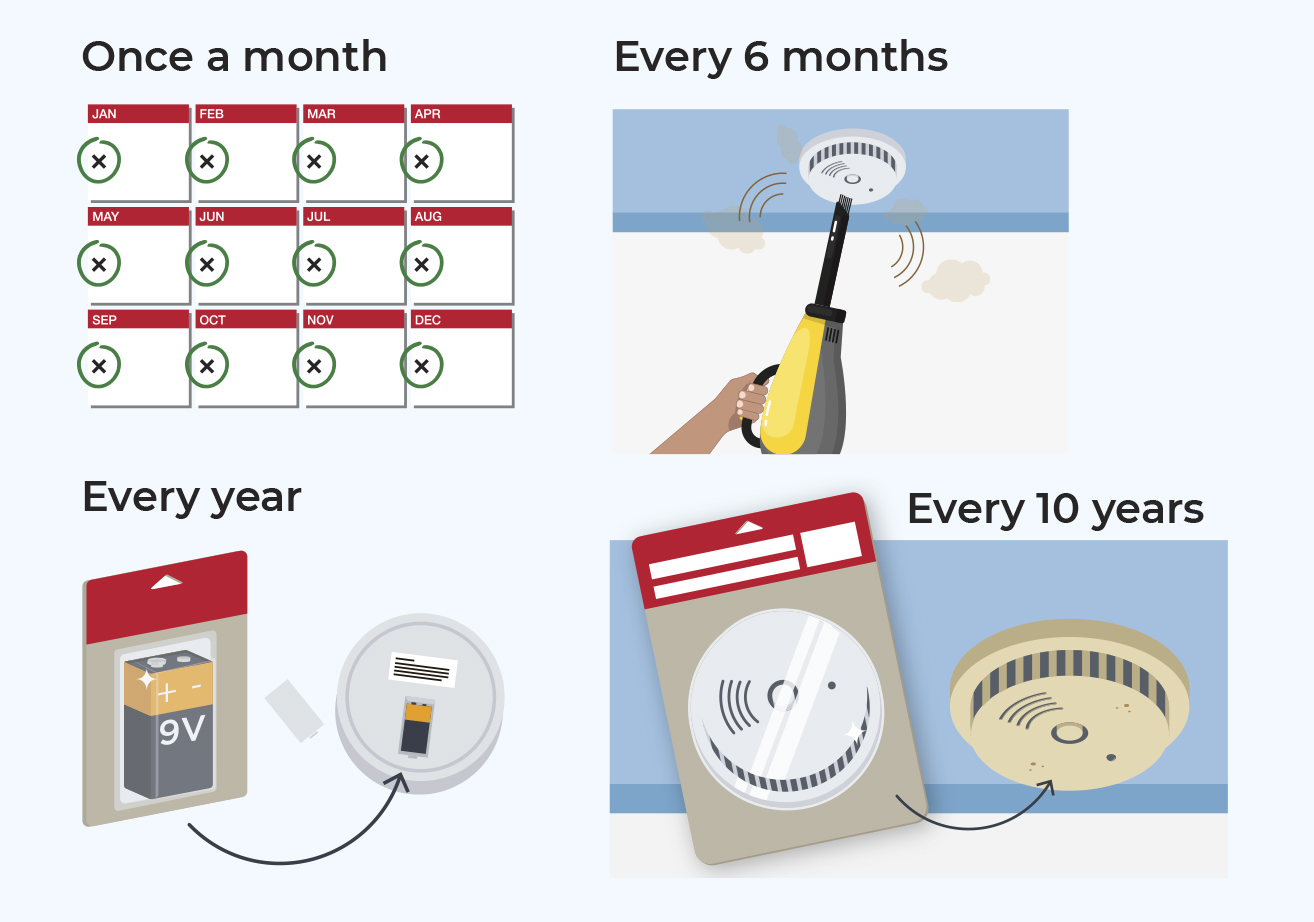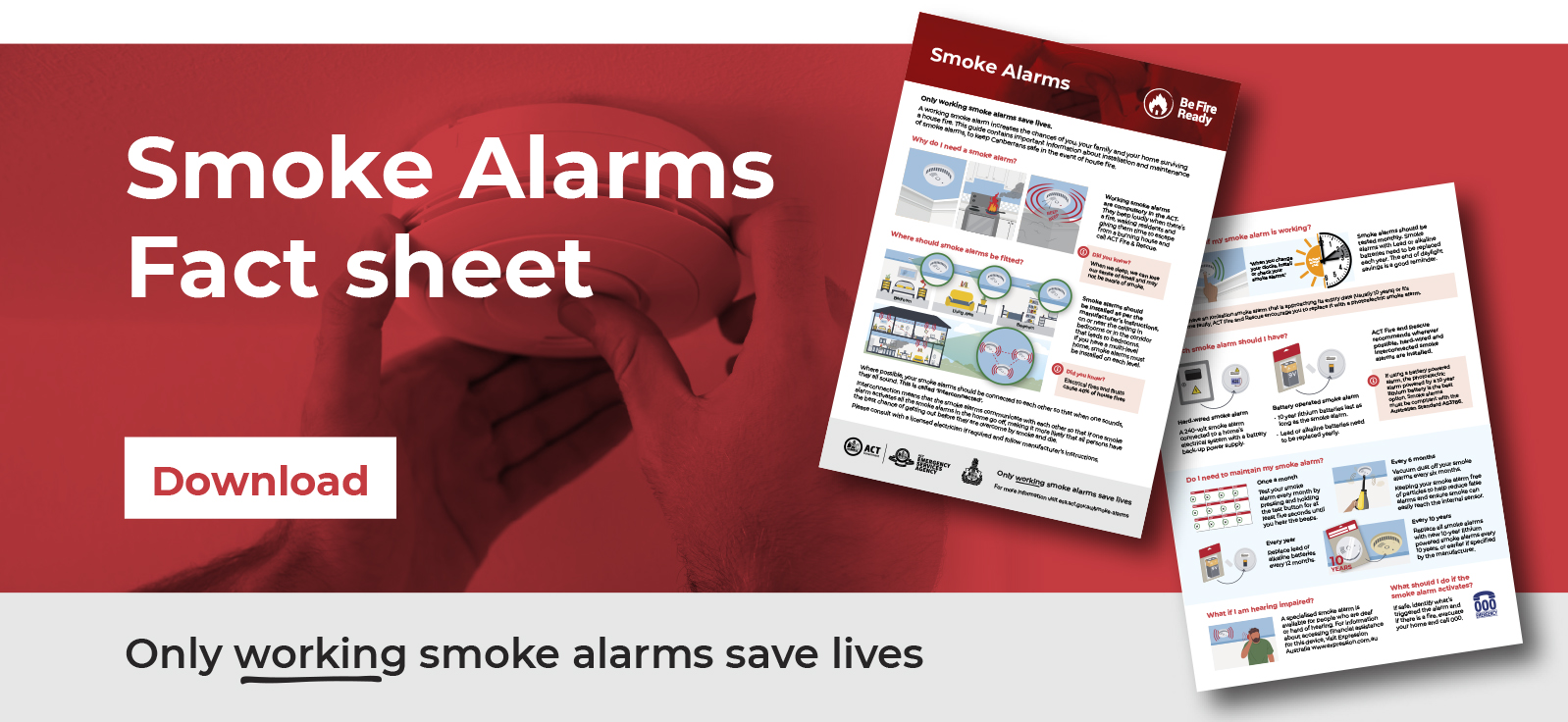Only working smoke alarms save lives.
A working smoke alarm increases the chances of you, your family and your home surviving a house fire. This guide contains important information about installation and maintenance of smoke alarms, to keep Canberrans safe in the event of house fire.
Why do I need a smoke alarm?

Working smoke alarms are compulsory in the ACT. They beep loudly when there’s a fire, waking residents and giving them time to escape from a burning house and call ACT Fire & Rescue.
Did you know?
When we sleep, we can lose our sense of smell and may not be aware of smoke.
Where should smoke alarms be fitted?
Smoke alarms should be installed as per the manufacturer’s instructions and the National Construction Code, on or near the ceiling in bedrooms or in the corridor that leads to bedrooms. If you have a multi-level home, smoke alarms must be installed on each level, and be interconnected.

Where possible, your smoke alarms should be connected to each other so that when one sounds, they all sound. This is called ‘interconnected’. Interconnection means that the smoke alarms communicate with each other so that if one smoke alarm activates all the smoke alarms in the home go off, giving all residents the best chance of getting out safely before they are overcome by smoke.
Please consult with a licensed electrician if required and follow the manufacturer’s instructions.
Did you know?
Electrical fires and faults cause 40% of house fires.
How do I know if my smoke alarm is working?
Smoke alarms should be tested monthly. Smoke alarms with Lead or alkaline batteries need to be replaced each year. The end of daylight savings is a good reminder.

Did you know?
If you have an ionisation smoke alarm that is approaching its expiry date (usually 10 years) or it has become faulty, ACT Fire & Rescue encourages you to replace it with a photoelectric smoke alarm.
Which smoke alarm should I have?
ACT Fire & Rescue recommends wherever possible, hard-wired and interconnected smoke alarms are installed.

Hard-wired smoke alarms
Legally required in houses built after 1 November, 1994.
A 240-volt smoke alarm connected to a home’s electrical system with a battery back-up power supply.
Battery operated smoke alarms
- Homes built before November 1994 can have battery or wired alarms.
- 10-year lithium batteries last as long as the smoke alarm.
- Lead or alkaline batteries need to be replaced yearly.
Did you know?
All rental properties must legally have a smoke alarm compliant with the Australian Standard AS3786.
Do I need to maintain my smoke alarm?

Once a month
Test your smoke alarms every month by pressing and holding the test button for at least five seconds until you hear the beeps.
Every 6 months
Vacuum dust off your smoke alarms every six months. Keeping your smoke alarms free of particles to help reduce false alarms and ensure smoke can easily reach the internal sensor.
Every year
Replace lead or alkaline batteries every 12 months.
Every 10 years
Replace all smoke alarms with new 10-year lithium powered smoke alarms every 10 years, or earlier if specified by the manufacturer. A hard-wired alarm must be replaced with a hard-wired alarm.
What if I am hearing impaired?
A specialised smoke alarm is available for people who are deaf or hard of hearing. For information about accessing financial assistance for this device, visit the ACT Deafness Resource Centre www.actdrc.org.au
What should I do if the smoke alarm activates?
If safe, identify what has triggered the alarm and if there is a fire, evacuate your home and call 000.
Illustrations above, have been kindly provided by Country Fire Authority (CFA)





